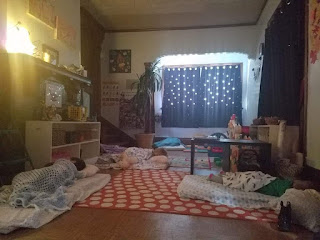Hi everyone, I am sorry I have not blogged in a while, but we have been short staffed and I have been filling in.
High turnover is a constant problem in childcare and this is especially harmful to infants and young children who need to develop strong relationships with their caregivers.
One of the main reasons for this turnover is low wages and a lack of benefits.
As we were advertising for a new team member I got a lot of backlash about the low pay we were offering and how high our tuition rates are. I spent a lot of time crunching numbers to try and raise pay rates and not raise tuition. It can’t be done, at least not in a way that does not lower the quality of care we provide.
I know that I have already written about advocacy but today I would like to share with you a tool that shows just how expensive it is to provide quality care.
Please visit https://costofchildcare.org/index.html and enter your state, then enter what you would like to see when it comes to early child care. You will be surprised by how expensive it is to provide that care.
We are a Group Home Center which is not on the list but it is similar to Family Home Care. I went there and entered Missouri and the only things I clicked on were to lower teacher child ratios and to increase teacher pay. I would need to charge $1471 a month to do that according to their calculations (which is close to what I had come up with.) I do not want to charge my families that much but I do want low ratios and to be able to recruit quality staff members and keep them. It seems like a no win situation and that is just the bare minimum for staff.
When I clicked to pay staff the same as kindergarten teachers it raised the rates to $1724. That is more than most people’s mortgages. Not many people could afford to pay that. When I got crazy and clicked to give staff health insurance and retirement plans, the needed monthly tuition went up to $2177 which is an unattainable amount for all but high income families.
Unfortunately how the high cost of childcare is kept down is by paying minimum wage or just above, offering no benefits and having ridiculously high teacher child ratios. This leads to teacher burnout and high turnover which causes our children to not be able to build those important early trusting relationships.
Not only do our children deserve better, so do the people caring for them. Early Childhood Educators and caregivers deserve to make a living wage, they deserve to have the opportunity to plan for their future, they deserve healthcare and they deserve the respect given to all other educators.
Right now our representatives are deciding how to best support families and children. Please go to https://www.thinkbabies.org/take-action-american-families-plan/?utm_medium=email&utm_source=email_link&utm_content=baby_monitor_07012021&utm_campaign=Q4_2021_Policy_Center_Resources
And tell them that our children and the people who care for them deserve better.

